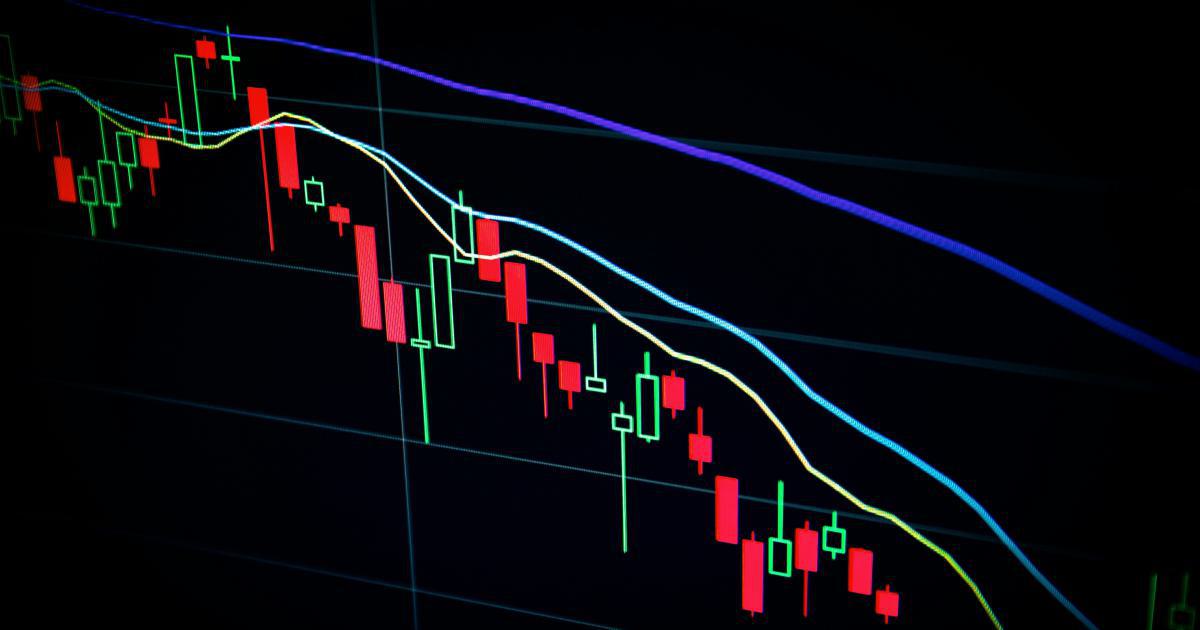Conquer Trading Anxiety Using 5 Proven Techniques

Trading anxiety is a common challenge that many traders face when navigating the dynamic and often unpredictable markets. Whether you're a beginner or a seasoned professional, the stress of fluctuating prices, unexpected market movements, and the constant need for quick decision-making can lead to overwhelming feelings of fear and self-doubt. In this comprehensive guide, we will delve into five proven techniques designed to help you overcome trading anxiety and boost your performance. By understanding and implementing these strategies, you can minimize stress, stay focused, and make smarter, more confident trading decisions.
In this article, you will find in-depth explanations, actionable solutions, and real-world examples to empower you to conquer the pressure of trading. We will explore techniques especially tailored to dealing with trading anxiety, integrating mindfulness, disciplined planning, risk management, continuous learning, and even seeking professional support when necessary. Let’s embark on this journey towards a calmer, more successful trading experience.
Understanding Trading Anxiety: The Root Causes and Impacts
Trading anxiety stems from a mix of psychological factors, market pressures, and personal expectations. The uncertainty of the markets, coupled with the fear of making costly mistakes, can create a cycle of stress that hinders decision-making processes. In fact, trading anxiety is not just about the fear of loss but often reflects deeper self-doubt and performance pressure.
The Psychological Underpinnings of Trading Anxiety
Many traders experience panic and stress due to the high-stakes nature of the markets. The unpredictability inherent in trading often cultivates a mindset that is focused on worst-case scenarios. For some, even small losses can create a disproportionate emotional reaction, triggering a cascade of worry that affects subsequent trades.
Cognitive distortions, such as overgeneralization and catastrophizing, are common among traders dealing with anxiety. These thought patterns result in a heightened sense of danger and uncertainty, making it imperative to learn techniques that can counterbalance these negative mental habits. Addressing these underlying issues is crucial for long-term trading success.
The Impact of Market Volatility on Trader Emotions
Market volatility further exacerbates trading anxiety. Unexpected news events, economic shifts, and sudden changes in market sentiment demand rapid responses that can overwhelm even the most experienced trader. The ability to remain calm under pressure is, therefore, not just a desirable trait but a requisite for success.
When traders overreact to market fluctuations, they tend to make impulsive decisions, leading to poor risk management and significant financial loss. Understanding this vicious cycle is the first step toward breaking free from the chains of anxiety. Ultimately, the goal is to develop a mindset that embraces uncertainty rather than fears it.

Technique 1: Cultivating Mindfulness and Meditation to Reduce Stress
One of the most effective techniques for combating trading anxiety is the practice of mindfulness and meditation. By centering your focus on the present moment, you can reduce the impact of anxiety-inducing thoughts and maintain a calm, clear perspective when making trading decisions.
The Science Behind Mindfulness in Trading
Mindfulness is more than just a relaxation technique; it has been supported by scientific research that demonstrates its ability to lower stress levels and improve cognitive function. Regular mindfulness practice has been shown to enhance concentration, reduce reactivity to stressors, and foster a greater awareness of one’s emotions. In the context of trading, this improved emotional regulation translates directly into better decision making.
For example, by practicing mindfulness, a trader can observe anxious thoughts without getting entangled in them. Instead of reacting impulsively to a sudden drop in the market, a mindful trader can take a moment to breathe, assess the situation objectively, and proceed with a well-thought-out defensive strategy.
Incorporating Mindfulness into Your Trading Routine
Here are some actionable steps to integrate mindfulness into your daily routine:
Set aside at least 10-15 minutes each day for a focused meditation session.
Use deep-breathing exercises to center yourself before engaging in trading activities.
Practice "body scans" to identify and release built-up tension in your body.
Keep a mindfulness journal to record your emotional responses and progress over time.
Apply mindfulness techniques during trading to pause and assess your emotions before making decisions.
Starting with these simple practices can create a positive feedback loop, reducing overall stress levels and making the trading environment feel more manageable. Increasing your awareness of your thoughts allows you to differentiate between rational analysis and anxiety-driven impulses.
Real-World Case Study: Mindfulness at Work
Consider the experience of Sarah, an experienced trader in a highly volatile market. Initially overwhelmed by trading anxiety, Sarah incorporated daily mindfulness sessions into her routine. Over several months, she reported not only a significant reduction in her stress levels but also an improvement in her overall trading performance. Her enhanced focus allowed her to identify patterns and opportunities that she had previously overlooked, proving that mindfulness can have both psychological and practical benefits.
Practical Tips for Beginners
- Start small: Begin your practice with short sessions and gradually increase the time as you become more comfortable.
- Use guided meditation apps: Resources like Headspace or Calm can be incredibly beneficial for beginners.
- Combine exercise with mindfulness: Activities like yoga or tai chi can also help balance mind and body.
By integrating mindfulness into your trading regimen, you can develop a more resilient mindset, reducing the overwhelming impact of market fluctuations on your emotional state. Mindfulness becomes a powerful ally, empowering you to navigate the challenges of trading with clarity and composure.
Technique 2: Developing a Structured Trading Plan
A clear and structured trading plan is essential for mitigating trading anxiety. When you have a well-defined strategy, you reduce uncertainty, which in turn diminishes anxiety. This plan should encapsulate your goals, risk tolerance, entry and exit strategies, and guidelines for position sizing.
The Role of Planning in Anxiety Reduction
The absence of a structured plan can lead to confusion and impulsive actions fueled by fear. A detailed trading plan acts as a blueprint that outlines your strategy and prevents you from deviating during emotionally charged moments. It serves as both a roadmap and a checkpoint, helping you stay true to your long-term objectives regardless of short-term market noise.
Trading anxiety often arises from the fear of the unknown. By having a predetermined plan, you create a sense of control over your trading outcomes. When uncertainty is minimized, the risk of making decisions based solely on emotion is greatly reduced.
Key Components of a Robust Trading Plan
Creating a trading plan that is both comprehensive and flexible is critical. Consider including the following elements:
- Trading Goals: Define clear, realistic, and measurable goals. These could range from daily profit targets to long-term portfolio growth.
- Risk Management: Establish rules for trade sizes, stop-loss limits, and profit targets to ensure that no single trade jeopardizes your overall account.
- Market Analysis Techniques: Detail the specific technical and fundamental analysis tools you will use, along with the conditions that justify entering or exiting a trade.
- Trading Routine: Outline the daily or weekly routine which includes pre market preparation, trading hours, and post-market analysis.
- Contingency Plans: Develop strategies to address unexpected market conditions or significant losses.
Creating and Testing Your Plan
A structured trading plan isn’t a one-time document; it is a living strategy that should evolve as you gain more experience and adapt to market conditions. Here’s how you can build and refine your plan:
Draft your initial trading plan based on your current understanding and goals.
Back-test your plan using historical market data to see how it would have performed in various conditions.
Analyze the results and make necessary adjustments.
Implement your plan on a demo account to get comfortable with it in a risk-free environment.
Transition gradually to executing your plan in live markets while keeping a detailed trading journal for continuous improvement.
Managing Emotions with a Trading Journal
One of the most insightful tools in reducing trading anxiety is maintaining a detailed trading journal. Record your trades, the rationale behind them, and the emotional state you were in when you executed each decision. Over time, this record can reveal patterns in your behavior and provide evidence-based insights into your decision-making process, helping you refine your strategy and build confidence.
Aligning your trading actions with a well-articulated plan not only reduces uncertainty but also provides a quantifiable method to measure your progress. This alignment is key in transforming anxiety into a focused, disciplined approach towards trading.

Technique 3: Implementing Effective Risk Management Strategies
Risk management is a cornerstone of successful trading and a powerful antidote to trading anxiety. When you understand and control the risks associated with each trade, you naturally alleviate much of the fear that stems from potential losses.
Understanding the Importance of Risk Management
Risk management isn’t merely a technical necessity; it’s a psychological strategy. Proper risk management enables you to accept losses as part of the trading process without allowing them to destabilize your emotional state. By ensuring that no single trade can have a disproportionate impact on your portfolio, you can trade with a greater sense of security.
Key Risk Management Techniques
Several methods can help control the risks in your trading strategy, including:
- Stop-Loss Orders: Always use stop-loss orders to limit potential losses. Set them at levels that protect your capital but also allow for normal market fluctuations.
- Position Sizing: Determine the appropriate size of each trade relative to your overall portfolio. A common recommendation is to risk no more than 1-2% of your total capital on any given trade.
- Diversification: Do not put all your funds into one asset or market. Diversifying your portfolio can mitigate the impact of a single losing trade.
- Risk/Reward Ratio: Establish a target risk/reward ratio for each trade. A ratio of at least 1:2 or 1:3 can help ensure that even if you incur losses, successful trades compensate for them.
Real-World Example: Limiting Losses to Boost Confidence
John, an experienced trader, once suffered significant losses due to over-leveraging his positions. After revamping his approach and implementing strict stop-loss orders and position-sizing rules, he noticed a substantial improvement in both his trading performance and emotional stability. The structured risk management approach allowed him to trade with a newfound sense of control and reduced his overall trading anxiety.
Developing a Personal Risk Management Framework
To build a personal risk management framework that fits your trading style, consider these steps:
Review your past trades to identify patterns and pinpoint areas where risk management could have been improved.
Define clear metrics for acceptable loss parameters, current portfolio risks, and maximum exposure per trade.
Use simulation tools to test different levels of risk and analyze their potential impacts on your overall results.
Continuously monitor market conditions and adjust your risk parameters accordingly, ensuring that you remain agile in the face of fluctuations.
Regularly revisit your risk management rules as your trading experience grows, ensuring they evolve in tandem with your strategy.
Implementing effective risk management is crucial not only for protecting your financial assets but also for building a more resilient trading mindset. When you feel secure that your downside is limited, the pressure to make impulsive decisions diminishes, allowing you to focus on longer-term, strategic planning.
Technique 4: Embracing Continuous Education and Self-Improvement
In the ever-evolving world of trading, continuous education is not just an advantage—it is a necessity. Learning new strategies, staying informed about market developments, and refining your skills are all integral parts of reducing trading anxiety and increasing confidence.
The Benefits of Lifelong Learning in Trading
Continuous education keeps your strategies fresh and adaptable, enabling you to respond to market conditions with agility. Moreover, the more knowledgeable you are about different trading techniques and market theories, the less likely you are to feel overwhelmed by uncertainties. By actively pursuing education, you transform every market movement into an opportunity to gain insights rather than a source of anxiety.
Practical Ways to Expand Your Trading Knowledge
Here are several actionable steps to integrate continuous learning into your trading practice:
- Online Courses and Webinars: Invest in courses that cover a wide range of topics such as technical analysis, fundamental evaluation, and risk management.
- Trading Books and Journals: Read widely from reputable sources to gather diverse perspectives on market behavior and trader psychology.
- Mentorship Programs: Connect with experienced traders or join trading communities where insights and strategies are shared.
- Simulated Trading: Use demo accounts to experiment with new techniques in a risk-free environment before applying them to your live trading strategy.
- Market Analysis Tools: Familiarize yourself with advanced trading software and charting tools that can help in analyzing trends and making informed decisions.
Case Study: The Impact of Education on Trading Success
Consider the journey of Mark, a trader who recognized that his initial struggles were partly due to a lack of comprehensive market knowledge. By dedicating a portion of his daily schedule to study and practice, Mark gradually improved his understanding of market dynamics. This not only reduced his anxiety by empowering him with actionable strategies but also led to more consistent trading results over time. His story is a testament to how continuous learning can transform both your performance and mindset in trading.
Building a Personal Development Plan
A personal development plan in trading involves mapping out areas where you want to improve, setting specific learning goals, and tracking your progress over time. Here’s a step-by-step guide to creating your own plan:
Identify the skills and knowledge gaps in your current trading approach.
Research reputable courses, books, and online resources that can address these gaps.
Set short-term and long-term learning objectives with clear milestones.
Regularly review your progress and adjust your plan as necessary.
Engage in community discussions and seek feedback to continuously refine your strategies.
By committing to lifelong learning, you shift the focus from fear of the unknown to the empowerment of continuous improvement. This not only helps in managing trading anxiety but also fosters a mindset that welcomes challenges as opportunities for growth.

Technique 5: Seeking Professional Support and Psychological Guidance
Even the most experienced traders can benefit from professional support, especially when it comes to managing the emotional toll of trading. Sometimes, trading anxiety is deeply rooted in personal or psychological issues that require expert intervention.
Recognizing When Professional Help is Needed
It is important to know the signs that indicate the need for professional assistance. If you find that trading anxiety is not only affecting your trading performance but also your overall quality of life, consider seeking help from a qualified therapist, counselor, or trading coach. Professional guidance can provide you with tailored strategies to address and overcome deep-seated fears and stressors.
The Role of Trading Coaches and Psychologists
Trading coaches specialize in not just strategy but also in the psychological factors that hinder performance. They can help you:
- Develop mental discipline and build emotional resilience.
- Identify and correct cognitive distortions that may be influencing your trade decisions.
- Create personalized routines for managing anxiety during high-pressure trading sessions.
- Provide accountability and an external perspective on your trading practices.
Psychologists familiar with performance anxiety or stress management can also offer cognitive behavioral strategies aimed at altering negative thought patterns. This dual approach—addressing both the tactical and emotional aspects of trading—can be transformative in reducing trading anxiety and building sustainable success.
Steps to Find the Right Professional Assistance
Finding the right trainer or therapist involves a few key steps:
Research and list professionals specializing in trading stress management or performance coaching.
Schedule consultation sessions to discuss your challenges and evaluate their suitability.
Choose a professional who offers a balanced approach combining technical trading skills with mental coaching.
Commit to regular sessions and integrate their feedback into your daily trading routine.
Evaluate progress periodically and adjust your support strategy as needed.
Real-World Example: Turning the Tide with Professional Guidance
Amanda, a long-time trader known for her cautious approach, found herself paralyzed by trading anxiety during periods of market turbulence. After consulting with both a trading coach and a psychologist, Amanda learned tailored techniques that helped her reframe her fears, improve her decision-making process, and regain confidence. Her improved mental framework allowed her to approach trading with a balanced perspective, demonstrating that professional support can make a significant difference in conquering trading anxiety.
Integrating the Techniques for a Holistic Trading Approach
The techniques outlined above are most effective when integrated into a holistic trading routine. While each method—mindfulness, structured planning, risk management, continuous education, and professional guidance—addresses different facets of trading anxiety, together they create a synergistic effect that can drastically improve not only your trading performance but also your overall well-being.
Crafting a Daily Routine that Combines All Techniques
Develop a schedule that incorporates time for mindfulness practices, rigorous trading plan review, risk analysis, and self-education. Here’s an example of how you might structure your day:
- Morning: Start with a 10-15 minute meditation or mindfulness exercise to center your thoughts. Follow with a review of your trading plan and a brief risk assessment.
- Midday: Dedicate time to market analysis using your preferred technical and fundamental tools. If possible, join a trading webinar or connect with a community to share insights.
- Afternoon: Execute trades based on your plan and pre-set risk parameters. Maintain a calm focus, revisiting your mindfulness techniques whenever you feel anxiety creeping in.
- Evening: Record your trades and emotions in a detailed trading journal. Dedicate time to studying new market developments or reading about advanced trading techniques.
- Weekly: Schedule time with your coach or mentor to review your progress and adjust your strategies as needed.
Embracing Flexibility and Patience
Trading is not a linear journey, and challenges will arise regardless of how well you prepare. However, a well-rounded approach that addresses both practical strategies and emotional well-being is the key to long-term success. Embrace the learning curve, and remember that every setback is an opportunity to refine your approach further.
The Ripple Effects of a Balanced Mindset
Reducing trading anxiety doesn’t only benefit your trading outcomes—it has a ripple effect across all areas of your life. Enhanced focus, improved emotional regulation, and a more disciplined approach to decision-making can boost your confidence in both professional and personal settings. With each successful trade and each day spent cultivating a strong mental framework, you rebuild your resilience and pave the way for future success.

Conclusion: Conquering Trading Anxiety for Long-Term Success
Trading anxiety can be a formidable adversary, but with the right techniques, it is possible to overcome it and transform your trading experience. By adopting mindfulness, developing a structured trading plan, implementing robust risk management strategies, embracing continuous education, and seeking professional support when needed, you establish a well-rounded approach that not only manages trading anxiety but also paves the way for sustained success.
Integrate these methods gradually into your routine, and remember that each step you take towards managing anxiety contributes to a more disciplined and confident trading mindset. With time and persistence, the tools and strategies outlined in this guide can empower you to conquer trading anxiety once and for all, and to navigate the markets with resilience and clarity. The journey to mastering your emotions is as critical as understanding market fuels, and ensuring that every decision is made in a calm, rational state will lead to both improved performance and enhanced overall well-being.
As you continue your trading journey, know that the path to success is paved with incremental improvements. Each technique discussed here addresses different facets of trading anxiety, creating a comprehensive framework that can be adapted to your evolving needs. Embrace this holistic approach and witness how your trading performance transforms—in both profitability and psychological strength.
Maintain a focus on self-improvement, remain patient with yourself during setbacks, and celebrate small victories along the way. Ultimately, conquering trading anxiety is about more than just mitigating risks; it’s about building a robust strategy that supports your personal growth, fosters resilience, and enables you to thrive even in the most volatile of markets.
Remember, every trader faces moments of uncertainty. It is the consistent application of mindful practices, structured plans, diligent risk management, a commitment to education, and the courage to seek help that differentiates the successful trader from the anxious one. Step into each trading day with confidence and a clear strategy, and let these five proven techniques guide you toward a rewarding and less anxiety-driven trading career.
May your journey toward conquering trading anxiety be marked by continuous growth, improved decision-making, and a profound sense of accomplishment in both your trading endeavors and everyday life.
Unlock Your Trading Potential with Edgewonk
Struggling to consistently achieve profitable trades? Edgewonk's cutting-edge analytics empower you to analyze your performance and refine your strategies.
Our advanced trading journal software provides detailed insights, psychological analysis, and personalized recommendations tailored to your unique trading style.
Shion Tanaka
64 posts written




